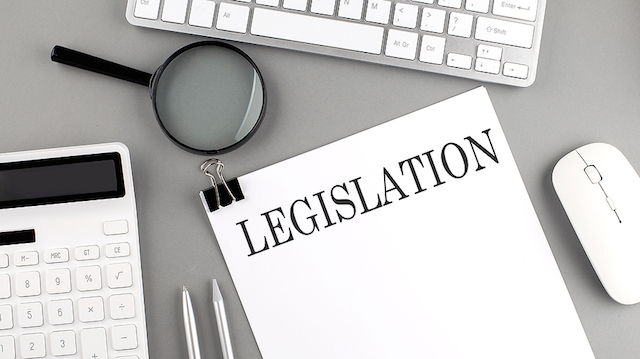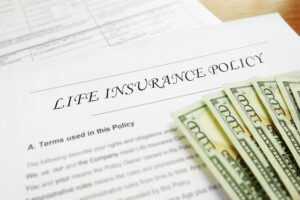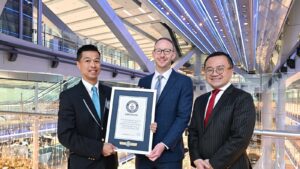The SECURE 2.0 Act of 2022, a result of extensive bipartisan collaboration that passed Congress in late December and was signed into law Dec. 29, represents a major milestone in enhancing retirement security.
“The passage of SECURE 2.0 will help millions of Americans save and prepare for a financially secure retirement. The bipartisan legislation includes a new government matching contribution for retirement savers, expands access to workplace retirement plans, and provides new ways to facilitate and protect retirement savings,” said Catherine Collinson, CEO and president of nonprofit Transamerica Institute and Transamerica Center for Retirement Studies (TCRS).
Research from Transamerica Institute and TCRS illustrates the timeliness, relevance, and potentially positive impacts of SECURE 2.0. Based on survey findings featured in their reports, Emerging From the COVID-19 Pandemic: Four Generations Prepare for Retirement and Emerging From the Pandemic: The Employer’s Perspective, here are eight meaningful ways the new law enhances retirement security:
#1. Implementing a government matching contribution for income-eligible retirement savers. Fifty-one percent of workers feel they do not have enough income to save for retirement. Under current law, the Saver’s Credit is a tax credit for low- to moderate-income workers saving for retirement in a 401(k) or similar plan or IRA. However, its success has been limited by its being nonrefundable and due to a widespread lack of awareness. Beginning in 2027, SECURE 2.0 reimagines and replaces the Saver’s Credit with the Saver’s Match, a matching contribution from the government for retirement savers meeting income eligibility requirements. The Saver’s Match will be 50% of a worker’s retirement plan or IRA contributions up to $2,000, representing a maximum match amount of $1,000. The new law also calls for the promotion of the Saver’s Match.
#2. Expanding workplace retirement plan coverage. Only 46% of employers with fewer than 100 employees offer a 401(k) or similar plan, compared with approximately nine in 10 employers with 100 to 499 employees (89%) and 500+ employees (92%). Among those not offering a plan and unlikely to do so in the next two years, employers’ top reasons are that their company is not large enough (79%) and concerns about cost (31%). Beginning in 2023, SECURE 2.0 helps address these issues by making it easier and more affordable for small businesses to adopt a qualified retirement plan, whether a stand-alone 401(k) or similar plan, or by joining a multiple employer plan (MEP) or pooled employer plan (PEP).
#3. Extending retirement plan eligibility to part-time employees. Many employers offer retirement benefits to their full-time employees, but relatively few extend eligibility to their part-time employees. Only 51% of part-time workers are offered a 401(k) or similar plan by their employer, compared with 77% of full-time workers. Beginning in 2025, SECURE 2.0 creates more stringent requirements for employers to extend retirement plan eligibility to their long-term part-time employees.
#4. Making it more convenient to save vis-à-vis automatic enrollment and automatic escalation. Automatic enrollment is a 401(k) or similar plan feature in which employees need to only take action if they desire to opt-out and not contribute to the plan. It eliminates the steps otherwise required of employees to enroll and start contributing to the plan. Automatic escalation is a feature that automatically increases participants’ contribution rates to the plan annually. Together, these plan features increase employees’ participation in the plan and contributions to their retirement savings. However, among employers, only 23% of plan sponsors have adopted automatic enrollment, while 75% have adopted automatic escalation. Beginning in 2025, SECURE 2.0 will require employers adopting new 401(k) plans to include automatic enrollment and automatic escalation.
#5. Mitigating the impact of financial emergencies. Workers have saved just $5,000 (median) to cover the cost of an unexpected major financial setback, and 14% of workers have no emergency savings. Moreover, more than one in four workers (26%) have taken an early withdrawal and/or hardship withdrawal from a retirement account, often the result of an emergency. Beginning in 2024, SECURE 2.0 helps solve these issues by creating an emergency savings account as a new plan feature for defined contribution retirement plans, including 401(k) plans, to help mitigate the need for workers to dip into their retirement savings. Additionally, under the new law, withdrawals from retirement accounts that are emergency withdrawals will not be subject to the 10% early distribution tax that is generally applicable to those under the age of 59½.
#6. Matching contributions for student loan repayments. Younger generations are graduating from college with student debt, which competes with their ability to save for retirement, during a time in their life when they can potentially leverage the growth and compounding of investments over a long-range savings horizon. More than one in five Generation Z workers (22%) between ages 18 to 24 and 17% of Millennial workers cite paying off student loans as a current financial priority. Beginning in 2024, SECURE 2.0 enables employers to make matching contributions to 401(k) or similar plans with respect to employees’ qualified student loan payments. So, if workers cannot afford to save for retirement while they are repaying student debt, they can still receive a matching contribution from their employer into their retirement plan account.
#7. Expanding Catch-Up Contributions. Many workers are inadequately saving for retirement and, as they grow older, they need to substantially increase their savings before they retire. For example, Baby Boomer workers have saved $162,000 in total household retirement accounts, and Generation X workers have saved just $87,000 (estimated medians). Beginning in 2024, SECURE 2.0 enables workers aged 50-plus to increase their catch-up contributions to a retirement plan account or IRA, allowing them to save more as they get closer to retirement. The new law includes rules requiring higher-income earners who make catch-up contributions to do so on a Roth or after-tax basis. Beginning in 2025, SECURE 2.0 enables workers aged 60 to 63 to save even more through catch-up contributions.
#8. Acknowledging longevity and fixing required minimum distributions (RMDs). People have the potential to live longer than ever before, and today’s workers envision working beyond the traditional retirement age. Almost four in 10 workers (39%) expect to retire at age 70 or older or do not plan to retire. Thirty-eight percent of workers cite outliving their savings and investments as one of their greatest retirement fears. Under current law, the IRS generally requires individuals to begin taking the RMD annually from their retirement accounts at age 72. The failure to do so comes with a steep penalty of a 50% excise tax on the RMD amount. SECURE 2.0 increases the RMD age from 72 to 73 in 2023 and up to 75 in 2033, thereby giving workers more time to grow their savings. The new law reduces the excise tax for failing to take an RMD to 25%, and if the RMD is corrected in a timely manner, the tax is further reduced to 10%.
“SECURE 2.0 represents a great stride towards strengthening our retirement system. Its ultimate success requires a collaborative effort among policymakers, the financial services industry, employers, and workers to fully implement and promote its provisions,” said Collinson. “While we are implementing SECURE 2.0, we must also expand our focus on addressing Social Security’s funding shortfall and seeking out more solutions so that all Americans can retire with dignity.”
Emerging From the COVID-19 Pandemic: Four Generations Prepare for Retirement and Emerging From the Pandemic: The Employer’s Perspective are part of the Emerging From the Pandemic series with reports featuring analyses by employment situation, gender, and other demographic influences (i.e., household income, full-time versus part-time workers, level of educational attainment, urbanicity, LGBTQ+ status, race/ethnicity). The reports are based on the 22nd Annual Transamerica Retirement Survey.













